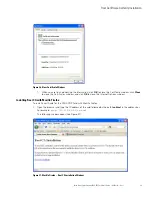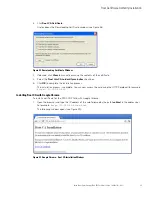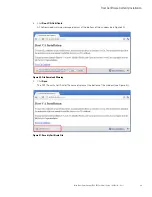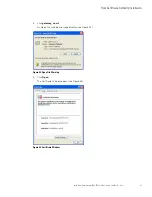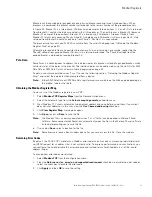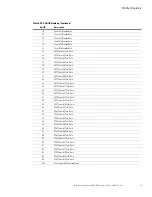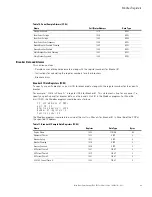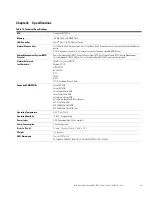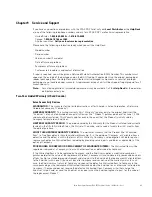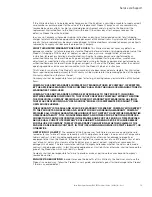
Modbus Registers
Eaton Power Xpert Gateway PXGX PDP Card User’s Guide 164202122—Rev 1
58
Modbus Register Addressing
This section describes Modbus function codes, data formats, and data addressing.
Modbus Function Codes
The PDP registers are read using Modbus Function Codes (FC). For most PDP registers, FC 04 is used. For
alarms, FC 02 is used. The PDP supports the following hex function codes:
Data Formats
Modbus programs usually provide an option for viewing various data types. Refer to your Modbus program
documentation for detailed information on viewing data options.
A register is 16 bits (two bytes). The PDP supports the following data types:
l
STRING
– A string of ASCII characters (two per register). Consult the Size parameter to find the string's
length for a given entry (it is a multiple of two so that entries are register-aligned).
l
FLOAT
– A 32-bit IEEE754 floating point number. FLOATs are always two registers.
l
UINT
– An unsigned integer. Consult the Size parameter to find the integer's size (in bytes) for a given entry
(it is a multiple of two so that entries are register-aligned).
l
TIME
– The Time type (ym dh ms) consists of six bytes specifying the year, month, day, hour, minutes, and
seconds. The bytes are stored in hexadecimal format. If your Modbus application displays the individual
bytes in a register, view the bytes using the decimal option. Otherwise, the bytes are best viewed by
displaying the two-byte register in a binary format and translating each byte to decimal.
For example, if today is May 17, 2010 and the time is 10:45 and 20 seconds, viewing each hex byte in
decimal would yield the following data, which is viewable as the year (10), month (05), day (17), hour (10),
minutes (45), and seconds (20):
See “Time or Date (FC 04)” on page 67 for more information.
l
BOOL
– A binary (Boolean) value of 0 or 1. BOOL is usually assigned to discrete input alarms.
Data Addressing
The register addresses and sizes listed in Table 7 through Table 13, starting on page 61, specify an address for
each entry. If a data type spans multiple registers (such as a FLOAT), lower addressed registers map to
higher-order parts of the value. Within each register, data is in most significant bit (MSB) first format.
Note:
A Modbus register contains two bytes. Therefore, the number of registers containing the information
can be obtained by dividing the bytes by two. For example, the vendor name in Table 7 on page 61
can be obtained by reading 32 Modbus registers starting at register 1032.
Note:
If a register is not supported in a particular device, an exception response is returned.
Table 5. Function Codes
FC
Hex
Description
Use
01
0x01
Read Coil Status
Supported for compatibility purposes
02
0x02
Read Discrete Inputs
Single input data, such as alarms and discrete contacts
03
0x03
Read Holding Registers
Supported for compatibility purposes
04
0x04
Read Input Registers
Analog data (most string and numeric data types), such as voltage
05
0x05
Write Single Coil
For future use
06
0x06
Write Single Register
For future use
0F
0x0F
Write Multiple Coils
For future use
10
0x10
Write Multiple Registers
For future use
10 05
17 10
45 20

